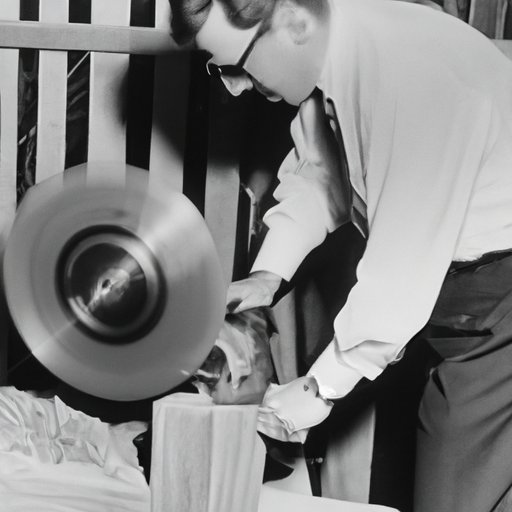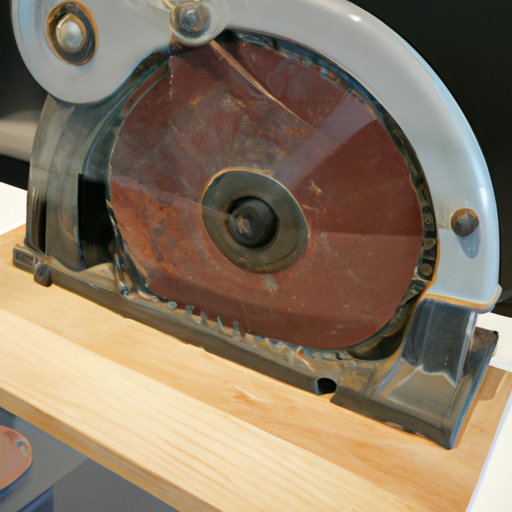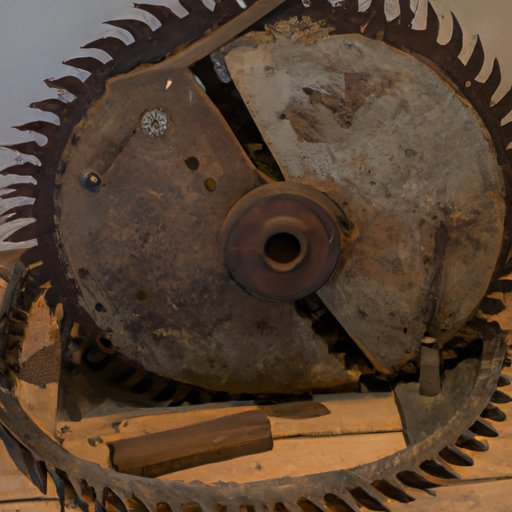Introduction
The circular saw is a widely used tool in modern construction, but it wasn’t always so. The invention of the circular saw revolutionized the industry, allowing for more precise and efficient cutting of materials than ever before. But who was responsible for this revolutionary tool? This article will explore the history of the circular saw and the pioneering mind behind its invention.
An In-Depth Look at the History of the Circular Saw
Before the invention of the circular saw, there were several different types of saws that were used to cut materials. These included the handsaw, which was used for simple straight cuts, and the pit saw, which was a large two-man saw used to cut through logs. However, these saws were not suitable for curved or complex cuts, and their use was limited.
In 1780, the first machine-powered saw was invented by Samuel Miller. This saw was powered by a water wheel and had a rotating blade that could make curved or complex cuts. While it was an improvement on previous saws, it was still too slow and inefficient for commercial use. It wasn’t until 1846 that the first true circular saw was invented by Alexander Mitchell of England.
How Innovation Led to the Invention of the Circular Saw
The invention of the circular saw was made possible by the contributions of many inventors and engineers throughout the years. For example, in 1777, John Smeaton developed the crank-shaft, which allowed for the transfer of power from a stationary source to a moving object. This made it possible for saws to be powered by steam engines, which increased their efficiency.
In addition, advances in technology played a major role in the development of the circular saw. In the early 19th century, steel manufacturing became more widespread, which allowed for the production of stronger and sharper blades. This made it possible for saws to be more powerful and efficient than ever before.

The Pioneering Mind Behind the Circular Saw
The man responsible for the invention of the circular saw was Alexander Mitchell, an English engineer and inventor. Mitchell was born in 1817 in Liverpool and received his education at the University of Glasgow. After graduating, he began working as a civil engineer and eventually established his own engineering firm.
Mitchell’s invention of the circular saw revolutionized the industry and made him a wealthy man. He went on to patent several other inventions, including a lighthouse lens and a marine propeller. He died in 1887 at the age of 70.

The Early Years: A Timeline of the Circular Saw
The first circular saw was invented by Mitchell in 1846 and was known as the “Mitchell Saw”. It was powered by a steam engine and was capable of making curved or complex cuts. In 1876, the first electric circular saw was invented by William Newberry, which made it even easier to use the saw. In 1895, the first portable circular saw was invented by George Platt, which allowed for greater mobility and convenience.
In the early 20th century, the circular saw continued to evolve and improve. In 1915, the first radial arm saw was invented by Raymond DeWalt, which allowed for greater accuracy and precision when making cuts. In 1946, the first circular saw with a laser guide was invented by Robert Bosch, which further improved the accuracy of the tool.
A Closer Look at the Circular Saw’s Inventor
Alexander Mitchell was a pioneering engineer and inventor who changed the course of history with his invention of the circular saw. He was born into a wealthy family and received a good education, which enabled him to pursue a career in engineering. His invention of the circular saw made him a wealthy man and helped to revolutionize the industry.
In addition to his work as an engineer and inventor, Mitchell was also an active philanthropist. He founded several charities and was involved in many social causes. He was a strong believer in education and was a patron of the arts. After his death, a monument was erected in his honor in Liverpool.

The Impact of the Circular Saw on Modern Construction
The invention of the circular saw had a profound effect on the construction industry. It allowed for more precise and efficient cutting of materials, enabling faster and more accurate construction. The circular saw is now one of the most popular tools in the industry, and its use has become commonplace in both residential and commercial construction.
The circular saw has also been instrumental in the development of new technologies, such as CNC routers and laser cutters. These advanced machines have revolutionized the way materials are cut and shaped, allowing for greater accuracy and precision than ever before.
Conclusion
The invention of the circular saw by Alexander Mitchell changed the course of history and revolutionized the construction industry. It allowed for more precise and efficient cutting of materials, enabling faster and more accurate construction. The circular saw is now one of the most popular tools in the industry and its use has become commonplace in both residential and commercial construction.
The legacy of Alexander Mitchell lives on today, and his invention of the circular saw will continue to shape the future of construction for years to come. His pioneering spirit and innovation have inspired generations of inventors and engineers, and his legacy will no doubt continue to influence the industry for many years to come.
(Note: Is this article not meeting your expectations? Do you have knowledge or insights to share? Unlock new opportunities and expand your reach by joining our authors team. Click Registration to join us and share your expertise with our readers.)
